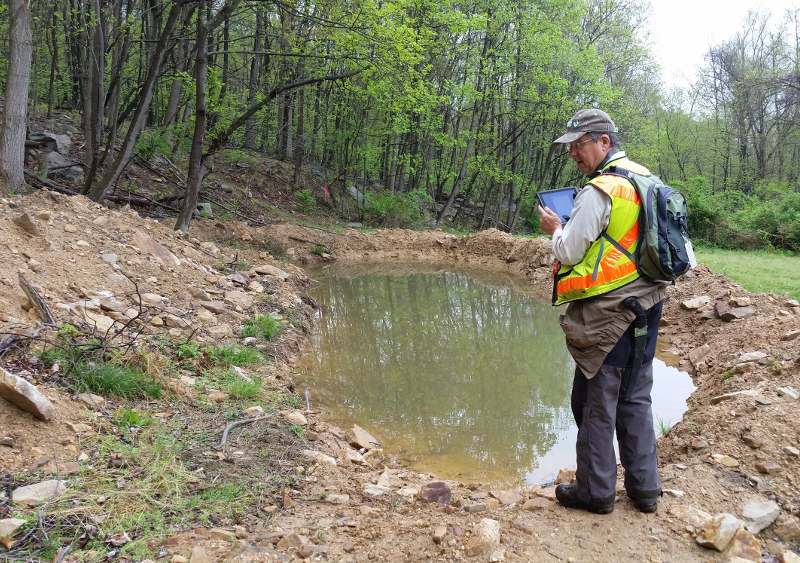Citizen Science for Climate Resilience:
Participatory Mapping at Cove Mountain Preserve
By Preston Welker, January 2018
 Cove Mountain Preserve along the Kittatinny Ridge © Shawn Hickey/The Nature Conservancy
Cove Mountain Preserve along the Kittatinny Ridge © Shawn Hickey/The Nature Conservancy
“The Kittatinny Ridge: 185 Miles. 360,000 acres. 80% forest and shrub habitat. 7 important mammal areas. Global important bird area.” – Kittatinny Ridge Coalition.
The Nature Conservancy engaged local communities through citizen science to create a flagship preserve where people can connect with nature and build support for conserving this 185 mile-long migratory corridor for climate resilience.
Cove Mountain Preserve is located at the heart of the Kittatinny Ridge. Being just a 15 minute drive from Pennsylvania’s capital, Harrisburg, the preserve provides a nature sanctuary for people from all walks of life. When hiking to the lookout over the mighty Susquehanna River students, landowners, donors, and stat legislators can learn about the greater conservation effort of the Kittatinny Coalition.
Cove Mountain Preserve’s historical use for timber harvesting presented a number of conservation challenges that required creative solutions. When purchased by The Nature Conservancy in 2017, the preserve’s 350 acres were largely overgrown with the invasive plant “mile-a-minute” (persicaria perfoliata) and contained a maze of abandoned logging roads that had been used for decades as informal hiking paths by neighboring residents.
The goal was to establish maintained trails that enhanced recreation opportunities, showcased the four forest-types and unique species found at the preserve, and also allowed extensive habitat restoration efforts to progress undisturbed. To develop a comprehensive management plan that also worked for the community, The Nature Conservancy invited community members to participate in a citizen science mapping project.



 Data
collected by citizen citentists (left) was used to create a sustainable trails
network (right) © Preston Welker
Data
collected by citizen citentists (left) was used to create a sustainable trails
network (right) © Preston Welker